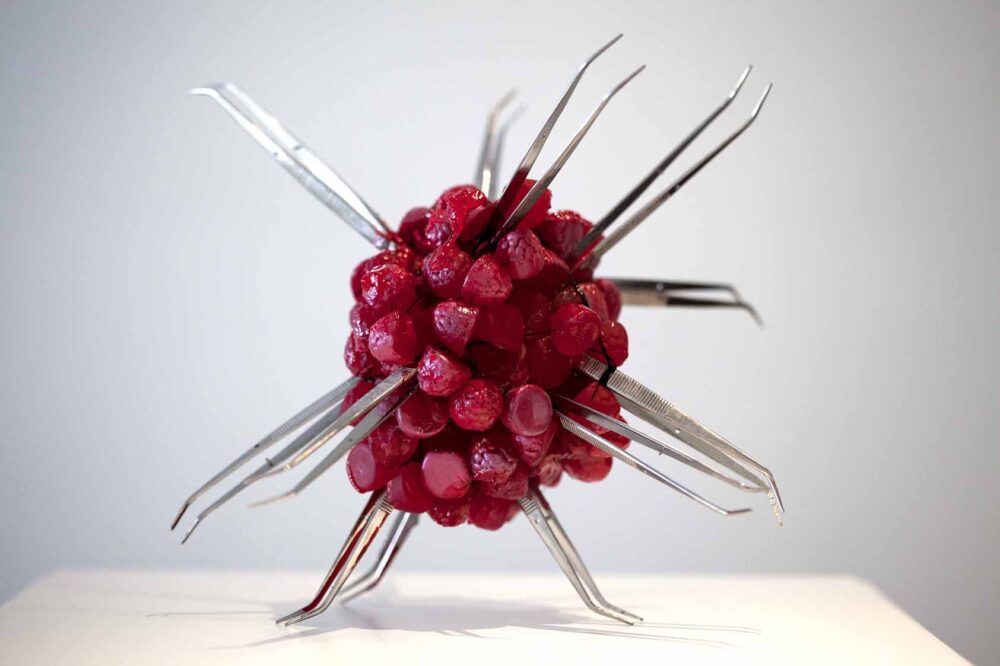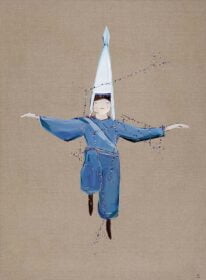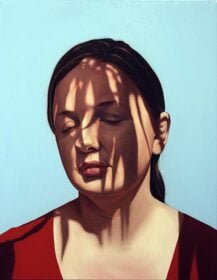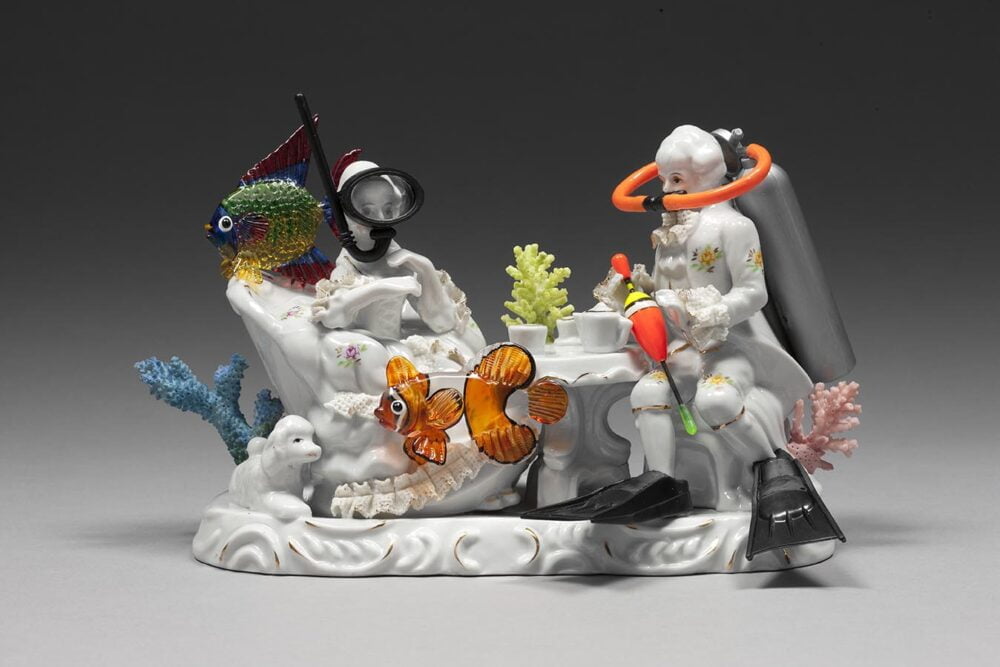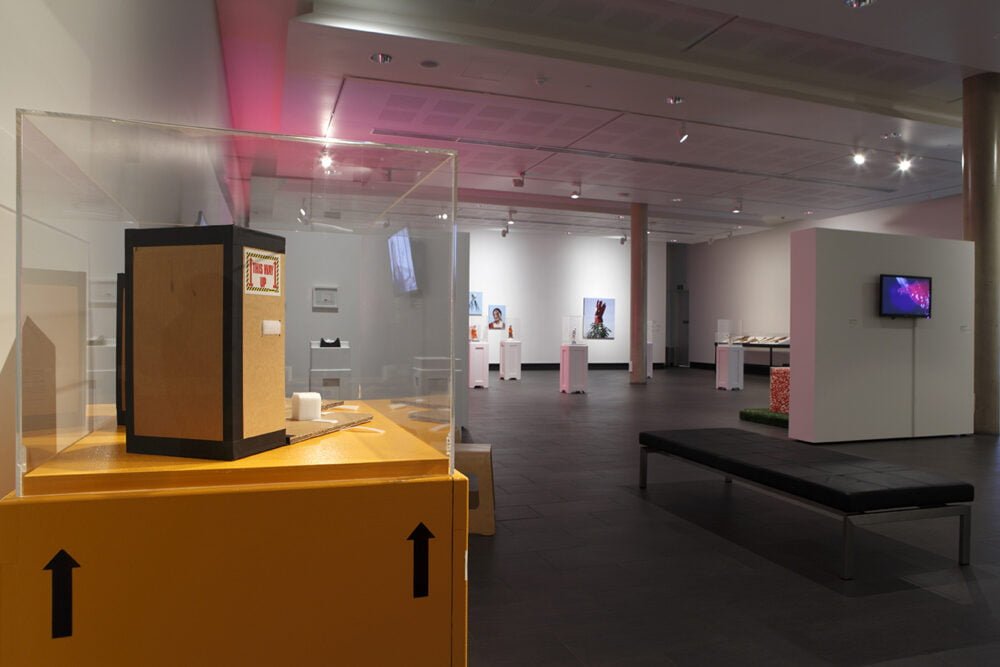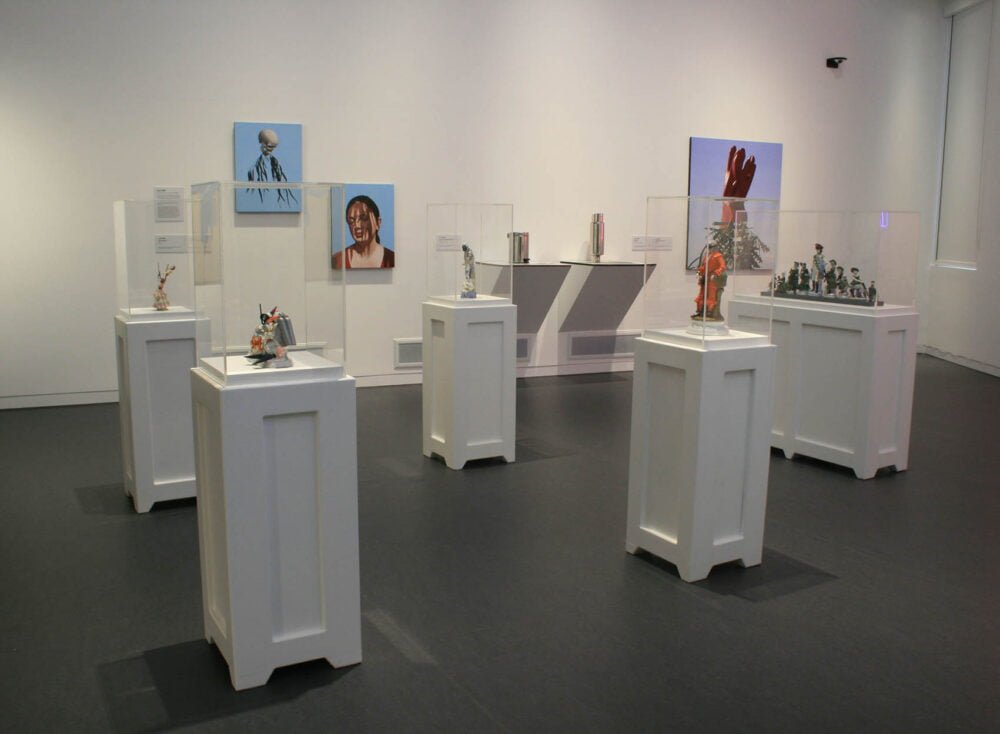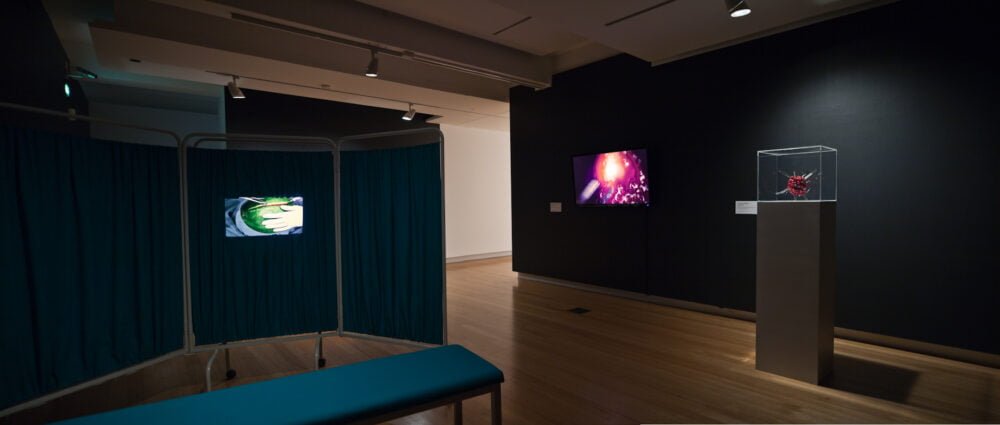Made to last: the conservation of art—
Artists: Brook Andrew Claire Anna Watson Ghostpatrol Juan Ford Penny Byrne
The conservation of art is commonly associated with the restoration of seventeenth century easel paintings or marble sculptures from antiquity. Materials used in contemporary art have challenged this perception and necessitated a shift in the way conservators interact with artists. Knowledge of the artist’s intent, creative processes, materials and techniques, and accurate documentation, are all important tools employed by conservators in the preservation of contemporary art.
The profession has adapted alongside artists in their use of materials, techniques and technology. The twentieth century saw a rapid increase in the availability of existing and new materials, particularly with the boom in mass production in the 1920s and mass consumption post World War II. Artists were now able to express their creativity in ways not previously possible.
An interdisciplinary approach to gathering information on the artists and materials is also important; communicating with curators, artist’s assistants, fabricators, scientists and the public is recognised as essential in developing decision-making strategies for conserving works of art. Establishing the artists’ intent involves ascertaining not only how the artist wants the work to look but also how the work is to be displayed.
Made to last: the conservation of art brings together five living contemporary artists who use a range of complex materials in their work: Brook Andrew, Penny Byrne, Juan Ford, Ghostpatrol and Claire Anna Watson. While some materials a conservator encounters may be unstable, a different kind of instability is evident in the themes of the five artists included in Made to last, involving the impact of humanity on the world – past, present and future.
There is no one solution to conserving contemporary art; an artist may have strong views on the conservation of their practice, and this view may vary for individual bodies of work. Documentation and dialogue regarding an artist’s intent and materials and techniques used are important tools for conservators, curators and private collectors to utilise in order to preserve important culture for future generations.
Brook Andrew, Penny Byrne, Juan Ford, Ghostpatrol and Claire Anna Watson are interviewed about their materials and techniques and their thoughts on the conservation of their work.
Camera: Josh McIvor. Equipment: Lemac.
Learning Guides
-

Claire Anna Watson Myocardium 2012
raspberry lollies, stainless steel surgical tweezers, thread, moulding clay, acrylic paint, glue
35 x 35 x 35 cm irregular
Courtesy of the artist -

Ghostpatrol tadaima swan 2012
acrylic and oil pastel on linen
Courtesy of the artist, Hugo Michell Gallery, Adelaide and
Backwoods Gallery, Melbourne -

Juan Ford An Imminent Silhouette 2007
oil on linen
66 x 51 cm
Courtesy of the artist, Dianne Tanzer Gallery, Melbourne and Sullivan+Strumpf Fine Art, Sydney -

Penny Byrne Tea for Two in Tuvalu 2011
vintage porcelain figurine, vintage Action Man accessories,
vintage coral, glass fish, epoxy resin, epoxy putty, retouching
medium, powder pigments
Courtesy of the artist and Sullivan+Strumpf Fine Art, Sydney -

Brook Andrew Men 2011
rare postcards, sapele and neon
Courtesy of the artist and Tolarno Galleries, Melbourne -

Made to last: the conservation of art at Charles Darwin University Art Gallery 2014
-

Made to last: the conservation of art at Manningham Art Gallery 2013
-

Made to last: the conservation of art at Queensland University of Technology Art Museum 2013
Venues
-
Latrobe Regional Gallery
12.09.12 - 28.10.12 -
Art Gallery of Ballarat
12.12.12 - 20.01.13 -
Manningham Art Gallery
27.02.13 - 28.03.13 -
Wangaratta Art Gallery
27.04.13 - 26.05.13 -
Queensland University of Technology Art Museum
03.08.13 - 22.09.13 -
McClelland Sculpture Park + Gallery
20.10.13 - 02.02.14 -
Charles Darwin University Art Gallery
10.04.14 - 27.06.14

